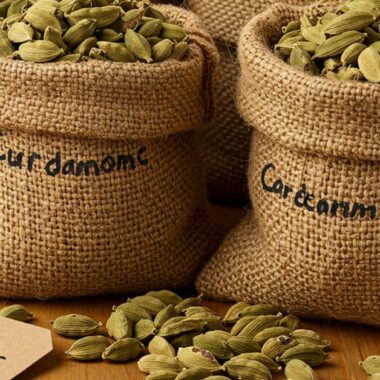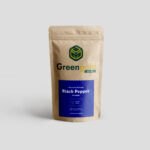Cardamom thrives in humid, shaded environments, making it an ideal crop for agroforestry systems. By integrating trees, shrubs, and other plants, farmers can enhance soil fertility, improve biodiversity, and boost productivity while ensuring long-term sustainability.
Let’s explore the best agroforestry techniques for successful cardamom cultivation! 👇
🌲 1. Shade Management with Multi-Tier Planting
✔️ Cardamom requires 50-60% shade for optimal growth.
✔️ Use multi-tier planting with tall trees (upper tier), medium-sized trees (middle tier), and cardamom (lower tier).
✔️ Best shade trees:
- Upper tier: Jackfruit, Silver Oak, Teak, Mahogany 🌳
- Middle tier: Coffee, Pepper, Banana 🍌
💡 Benefit: Protects from harsh sunlight, reduces evaporation, and improves soil moisture retention.
🌾 2. Alley Cropping for Better Land Utilization
✔️ Plant rows of cardamom between fast-growing nitrogen-fixing trees (like Gliricidia or Sesbania).
✔️ These trees enrich the soil and provide biomass for mulching.
✔️ The alley structure prevents soil erosion and increases water retention.
💡 Benefit: Boosts soil fertility and enhances moisture conservation.
🍃 3. Mixed Cropping for Biodiversity & Pest Control
✔️ Grow companion crops like:
- Coffee & cocoa for extra income ☕🍫
- Pepper vines on shade trees for vertical farming 🌿
- Turmeric & ginger for natural pest resistance 🧄
💡 Benefit: Diversifies income and reduces pest infestations naturally.
🌊 4. Soil & Water Conservation with Contour Planting
✔️ In hilly areas, plant cardamom along natural contours to slow water runoff.
✔️ Use check dams and bunds to retain moisture in the soil.
✔️ Grow grasses and cover crops between rows to reduce erosion.
💡 Benefit: Prevents soil erosion and maintains consistent soil moisture.
🏞 5. Mulching & Organic Matter Enrichment
✔️ Apply dried leaves, wood chips, or coir pith around plants.
✔️ Helps retain soil moisture, suppress weed growth, and enhance nutrient availability.
✔️ Decomposing mulch improves microbial activity, leading to better root health.
💡 Benefit: Less irrigation needed, better soil health, and higher yields.
🦋 6. Promoting Pollinators & Natural Predators
✔️ Cardamom depends on insects like bees for pollination.
✔️ Plant flowering species around farms to attract pollinators.
✔️ Encourage birds & beneficial insects that control pests naturally.
💡 Benefit: Increases yield and reduces chemical pesticide use.
🌿 Conclusion: A Sustainable Future for Cardamom Farming
By integrating agroforestry techniques, cardamom farmers can achieve higher productivity, better soil health, and long-term sustainability.












